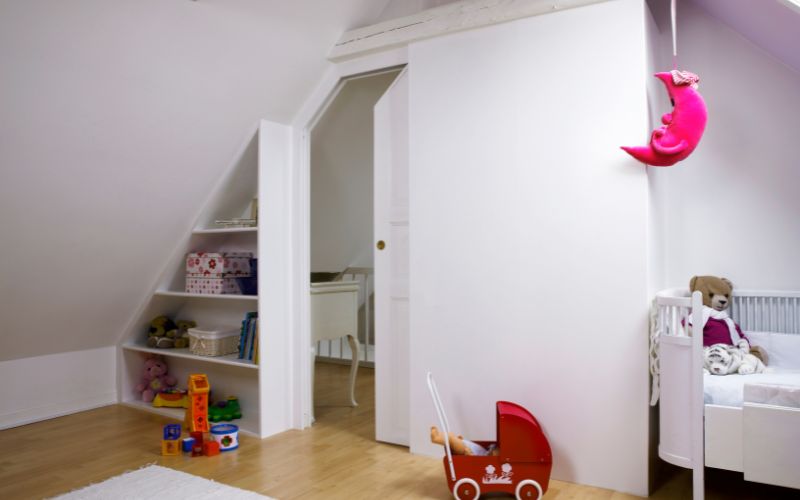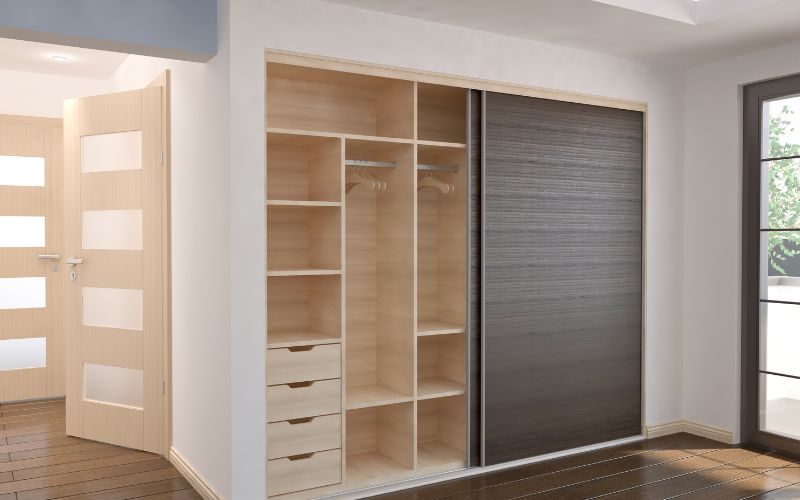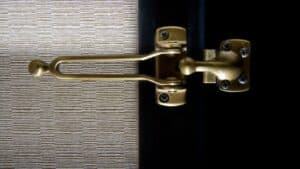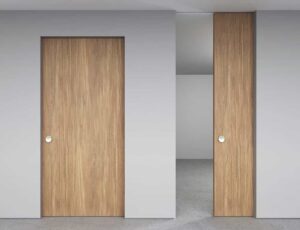What Is a Hidden Door?
A hidden door is an architectural feature designed to blend seamlessly with its surroundings, often serving as a concealed entrance to a secret room or passageway. These inventive entryways allow you to cleverly hide spaces in plain sight, maintaining privacy and adding an element of surprise to your home.
Hidden Doors in History
Hidden doors are not just the stuff of mystery novels; they have a real-world historical presence. In centuries past, hidden doors provided escape routes for royalty and nobility, from castle secret passages to priest holes designed during religious persecution. These concealed exits were pivotal in ensuring the safety and secrecy of those who needed to hide or escape swiftly. The fascination with hidden doors has prevailed, and modern applications are often inspired by this historical context—integrating the intrigue and functionality of ancient designs into contemporary homes. Based on historical development, hidden doors have had various uses, often for security, concealment, or escape:
- In ancient Egyptian pyramids, hidden doors and passages were used to protect the tombs and treasures of pharaohs from thieves and tomb raiders. Decoy rooms would be used to confuse potential robbers.
- In medieval castles, hidden doors provided escape routes and allowed access to food, water, and other necessities during a siege.
- During the reign of Queen Elizabeth I in 16th century England, Catholic priests used hidden rooms called “priest holes” to conceal themselves during raids, as practicing Catholicism was punishable by death.
- In the 19th century United States, hidden doors were part of the Underground Railroad, allowing escaping slaves to hide from searches.
- During Prohibition in the 1920s, hidden doors provided entry to secret speakeasies and underground clubs.
- In World War II-era homes, hidden “fallout rooms” with secret doors were marketed as shelters from potential nuclear attacks.
So, in summary, throughout history, hidden doors have often served a security purpose, whether to hide valuables, people, or illegal activities. They allowed concealment, escape, and protection in times of siege, war, persecution, or lawbreaking. Modern hidden doors are used more for fun and novelty, but their historical precedent was frequently more functional and critical for survival.
Where Will Your Hidden Space Go
Deciding on the location of your hidden space hinges on your home’s layout and your personal needs. Consider how each potential space can serve you best.
Home Office: If you work from home, a hidden door in your library or family room could lead to a secluded home office. It’s a professional sanctuary where you can work undisturbed.
Laundry Room: A space often cluttered and busy, you might opt to hide your laundry room behind a cleverly disguised door in your hallway or kitchen pantry. This keeps the functional aspect of your home out of sight, yet easily accessible.
Media Room: For entertainment enthusiasts, a media room is a treasure trove. Conceal it behind a bookshelf in the living room to surprise guests with your hidden cinema.
Hidden Bathroom: An excellent way to utilize extra space in a basement is to install a hidden bathroom. It can prove both convenient and a novelty.
Kitchen Pantry: Capitalize on kitchen space by concealing a kitchen pantry behind what appears to be cabinets. This can keep your culinary space tidy and well-organized.
Remember to assess the structural possibilities and limitations of your property. Properly installed hidden doors can offer both a sense of mystique and practicality to your living spaces.
18 Creative Hidden Doors Ideas to Streamline Your Room Space
Bookshelf Door: Transform your love for books into a secret passage. Shelves filled with books can swing open to reveal a room, instantly adding character to your space.
Wall Art Access: Hang a large canvas or a tapestry on a flat door. Your guests will admire the art, unaware it hides a room.
Panel Perfect: Install a wall panel that doubles as a door, blending seamlessly with your room’s paneling.
Wainscoting Wonder: Include a hidden door within wainscoting for a sophisticated touch that maintains architectural integrity.

Slide and Hide: Use sleek sliding doors that look like part of the wall when closed, offering a modern feel to conceal areas like a study or man cave.

Pivot to Privacy: Implement a pivoting mechanism for a door to rotate into a room, perfectly camouflaged as part of a functional wall.

Wardrobe Gateway: Channel classic tales with a wardrobe that opens to another room, providing a playful and nostalgic entryway.

Fireplace Façade: Design a fake fireplace that swivels open, leading to hidden compartments or spaces.

Kitchen Cabinet Crawl: Equip some kitchen cabinets with the ability to swing open, connecting to a pantry or a hidden coat closet.

Chic Shutter Doors: Use shutters to fashion a hidden door, making it appear as a window treatment from afar.

Dresser Doorway: Modify a dresser so that the drawers are fixed, and the frame swings open to a secret spot.

Bifold Bookcase: Opt for bifold doors decked with books or decorative items that open accordion-style.

False Floor Panel: Craft a trapdoor in the flooring, great for wine cellars or concealed storage.

Corner Curiosity: Fit a door into a corner of a room, where it’s least expected, finished with the same wallpaper as the walls.

Air Vent Passage: Style an oversized decorative vent that can be moved aside to access another area.

Scrollwork Screen: Decorative metal scrollwork can front a hidden door while adding an artistic element to the room.

Column Concealment: Design a faux column in your home to ingeniously hide a door mechanism within.

Rails Reveal: Incorporate a sliding barn door with rails that doubles as artwork, seamlessly blending into the room’s design.

Example Process of Building a Hidden Door
During the process of deciding to add a hidden door to your primary suite or any part of your home, proper installation is crucial. Your hidden door can serve as a clever addition to your portfolio of home improvements, showcasing your ingenuity and craftsmanship. Follow these steps to create your own concealed entry:
- Choose the Location
- Identify a suitable wall or a space where you anticipate infrequent traffic. It should blend naturally with the room’s design.
- Design the Door
- Decide if you want the door to swing in or out.
- Keep in mind the room’s aesthetics to ensure the door remains discreet.
- Frame the Doorway
- Measure the dimensions accurately.
- Cut and construct a frame that will hold the hidden door in place.
- Select the Right Materials
- Opt for materials that match your room’s décor.
- Consistency is key for maintaining the hidden aspect of the door.
- Install the Door Hinges
- Choose hinges that can support the weight of your chosen material.
- Install them carefully to ensure a smooth operation and maintain the illusion.
- Craft the Camouflage
- Whether a bookshelf or a paneled wall, craft your door to appear as part of the room.
- Precision in measurements and cuts will help you achieve a seamless look.
- Add Finishing Touches
- Paint or add the same finish as the surrounding area.
- Ensure that any gaps are filled to prevent any hints of a door being present.






